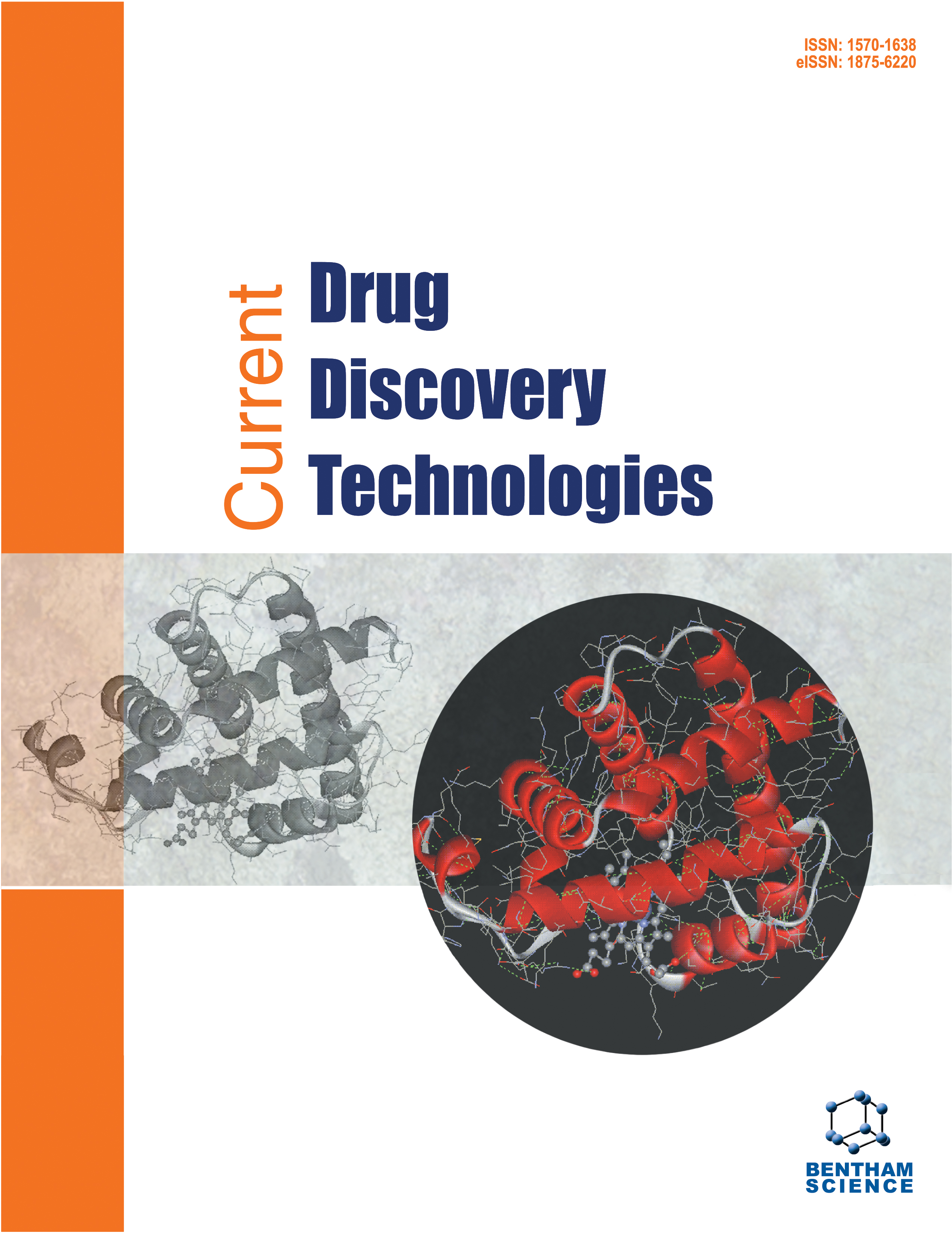- Home
- A-Z Publications
- Current Drug Discovery Technologies
- Previous Issues
- Volume 20, Issue 2, 2023
Current Drug Discovery Technologies - Volume 20, Issue 2, 2023
Volume 20, Issue 2, 2023
-
-
Hesperidin: A Potential Therapeutic Agent against COVID-19
More LessAuthors: Ashwani K. Dhingra, Bhawna Chopra, Vaibhav Rathi and Sameer SapraCOVID-19, aka Coronavirus Disease 2019, triggered by new severe acute respiratory syndrome coronavirus-2 or SARS-CoV-2, is now a public health emergency due to its rapid spread, high transmission efficiency, and severe viral pandemic that is significantly increasing the number of patients and associated deaths. Currently, no specific treatment is available for this highly contagious virus. The unavailability of effective and sp Read More
-
-
-
A New Bacteriocin from Latilactobacillus sakei: In vitro and In situ Application
More LessAims and Background: Natural preservatives are a viable alternative to replace chemical preservatives that have potential toxicity and carcinogenic effects. Objective: To prove the effectiveness in increasing the microbiological stability of Minas Frescal cheese with the addition of a bacteriocin obtained from Latilactobacillus sakei as a natural preservative. Methods: A new broad-spectrum bacteriocin was evaluated for its functio Read More
-
-
-
Recent Advances in the Development of Pyrimidine-based CNS Agents
More LessAuthors: Swati Pant and Sumitra NainBackground: In the past few decades, considerable progress has been made in CNS drug discovery, and various new CNS agents have been developed. Pyrimidine is an important scaffold in the area of medicinal chemistry. Recently, pyrimidine-containing compounds have been successfully designed as potent CNS agents. Substantial research has been carried out on pyrimidine-bearing compounds to treat differ Read More
-
-
-
In Silico Analysis of the Antidepressant Fluoxetine and Related Drugs at SARS-CoV-2 Main Protease (Mpro) and Papain-like Protease (PLpro)
More LessBackground: SARS-CoV-2 main protease (Mpro or 3CLpro) and papain-like protease (PLpro) are common viral targets for repurposed drugs to combat COVID-19 disease. Recently, several antidepressants (such as fluoxetine, venlafaxine and citalopram) belonging to the Selective Serotonin Reuptake Inhibitors (SSRIs) and the Serotonin-Norepinephrine Reuptake Inhibitors (SNRI) classes have been shown to in vitro inhibit viral Read More
-
-
-
Synthesis and Biological Activity Evaluation of Pyrazole–1,2,4–triazole Hybrids: A Computer-aided Docking Studies
More LessBackground: In the present study, a new series of 1,2,4-triazole linked to pyrazole derivatives (8a-j) of 4-(((7-amino-7H-[1,2,4]triazolo[4,3-b][1,2,4]triazol-6-yl)methyl)amino)-1,5-dimethyl- 2-phenyl-1H-pyrazol-3(2H)-one were synthesized and assessed for their antibacterial and anticancer activity. Objective: Encouraged by these results, these analogues 4-(((7-amino-7H-[1,2,4]triazolo[4,3- b][1,2,4]triazol-6-yl)methyl)amino)- Read More
-
-
-
Preparation of Zinc Oxide Nanoparticles Assisted by Okra Mucilage and Evaluation of its Biological Activities
More LessBackground: In this study, zinc oxide nanoparticles (ZnO-NPs) were biologically synthesized from Abelmoschus esculentus L. (Okra) mucilage fraction (OM). Methods: Analytical techniques were employed to study the formation and properties of OM-ZnO NPs, including their morphology, shape, size distribution, and surface charges. Additionally, OM-ZnO NPs were assessed for their antimicrobial, antioxidant, and cytotoxic Read More
-
-
-
PROTAC: A Novel Drug Delivery Technology for Targeting Proteins in Cancer Cells
More LessAuthors: Rajni Bala, Rakesh K. Sindhu, Reecha Madaan and Shantanu Kumar YadavThe treatment measures of malignant carcinomas are most important for human health. In recent years the use of targeted therapy based on small molecule compounds and identical immunoglobulin has been the most frequently used tool to combat cancerous cells. But there are still several limitations in their clinical development and applications, including their ability to bind multiple molecular target sites, both cell s Read More
-
-
-
An Overview of Pharmacological and Clinical Aspects of Spirulina
More LessSpirulina or Arthrospira, a Cyanobacterium from the class Cyanophyceae, with a wide range of properties, has been applied for over 400 years. The present study aimed to review available investigations surrounding the clinical and pharmacological properties of Spirulina that have been carried out so far. Databases including Scopus, PubMed, Google Scholar, and Web of Science were searched for relevant literature using the key Read More
-
Volumes & issues
-
Volume 22 (2025)
-
Volume 21 (2024)
-
Volume 20 (2023)
-
Volume 19 (2022)
-
Volume 18 (2021)
-
Volume 17 (2020)
-
Volume 16 (2019)
-
Volume 15 (2018)
-
Volume 14 (2017)
-
Volume 13 (2016)
-
Volume 12 (2015)
-
Volume 11 (2014)
-
Volume 10 (2013)
-
Volume 9 (2012)
-
Volume 8 (2011)
-
Volume 7 (2010)
-
Volume 6 (2009)
-
Volume 5 (2008)
-
Volume 4 (2007)
-
Volume 3 (2006)
-
Volume 2 (2005)
-
Volume 1 (2004)
Most Read This Month
Article
content/journals/cddt
Journal
10
5
false
en


